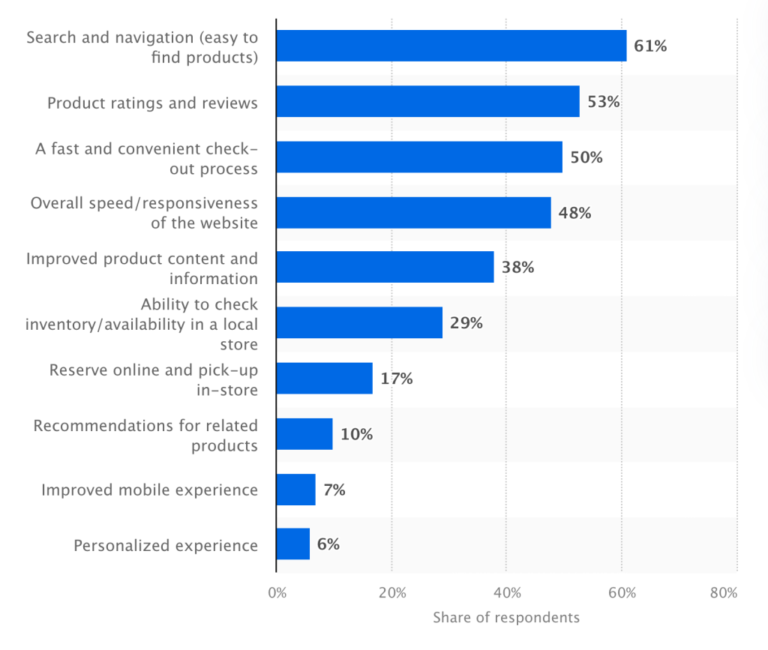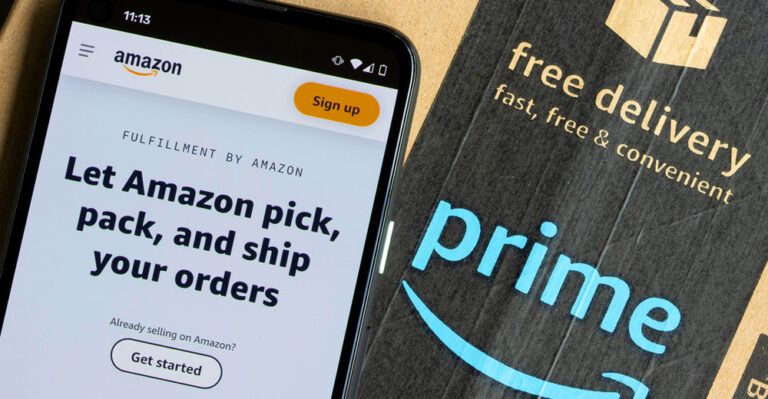Shopify vs Payhip: which is the best option for your business?
Shopify is overall my favorite ecommerce platform, for companies in search of a scalable, flexible, and easy-to-use omnichannel solution. It’s particularly ideal for those selling physical products, online, on marketplaces, over social media and in stores (through Shopify POS).
Payhip, alternatively, lacks the versatility and scalability of Shopify, but it’s a great choice for selling digital downloads, courses, and coaching experiences. There’s even a free plan available.
Here, I’ll share my insights from reviewing both platforms to help you make the right choice.
Shopify vs Payhip: The Pros and Cons
Shopify Pros 👍
- Suitable for selling any kind of product (with the right apps)
- Massive app marketplace with thousands of add-ons
- Easy to use website builder with great theme options
- Powerful inventory and order management tools
- SEO-friendly solution with built-in marketing tools
- Omnichannel support for selling on various platforms
- Includes an integrated point of sale solution
Shopify Cons 👎
- You’ll pay transaction fees if you don’t use Shopify Payments
- No free plan (and the subscription costs can add up)
- Slightly more complex to sell digital products
Payhip Pros 👍
- Easy to use interface and admin area
- Supports multiple types of digital products
- Free plan (which supports unlimited products)
- Payment, VAT, and tax management tools
- Built-in marketing tools (for things like email marketing)
- Attractive, mobile-responsive themes
Payhip Cons 👎
- Limited payment gateway options
- Basic SEO features
- Poor scalability (limited omnichannel selling and integration options)
Shopify vs Payhip: Overview and Pricing
What is Shopify, and How Much Does it Cost?
Shopify is my favorite ecommerce platform, and one of the most popular solutions for “omnichannel selling” worldwide. It combines a flexible website builder, with integrated payment processing, reporting and analytical tools, inventory and order management, and marketing capabilities.

Primarily, Shopify supports companies selling physical products (whether its items you manufacture yourself or you’re using a dropshipping model). However, you can sell subscriptions and digital products, via add-ons and integrations.
You can use Shopify to build an attractive storefront, sell unlimited products through your own domain, and even access sales channels like marketplaces, and social media platforms. Shopify also supports international selling, and has an integrated POS software solution.
Shopify offers a range of pricing packages for companies to choose from, beginning with the Starter plan for $5 per month, which supports selling through messaging apps and social media.
If you want the full ecommerce platform and website builder, you’ll need one of the following core plans:
- Shopify Basic: $39 per month
- Shopify: $105 per month
- Shopify Advanced: $399 per month
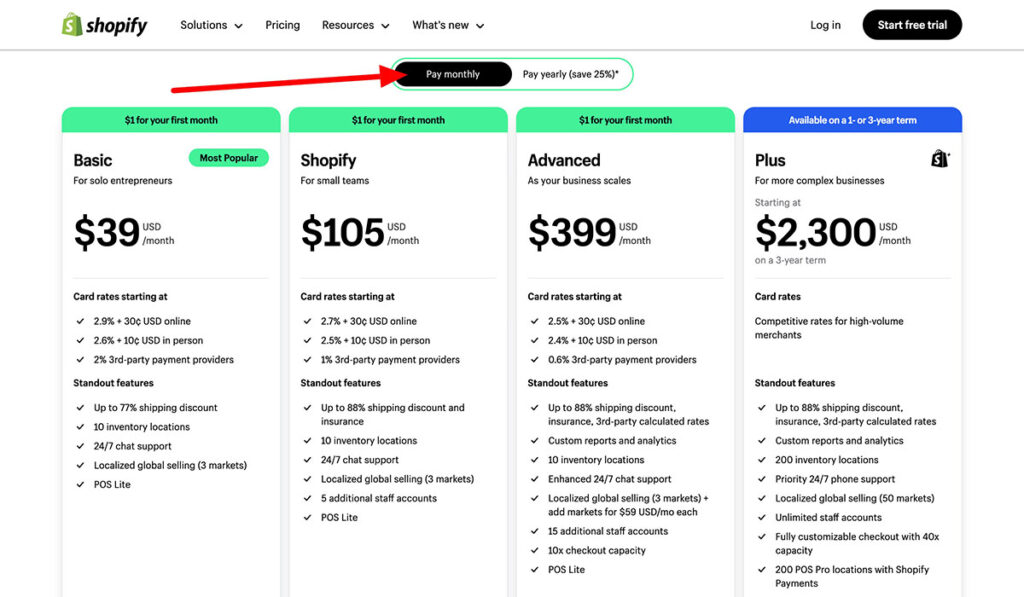
There’s also an Enterprise-level plan (Shopify Plus), with custom pricing starting at $2,300 per month. Alongside monthly fees, you’ll pay extra on Shopify to use third-party payment processors (transaction fees range from 0.15% to 2%), add-ons, apps, and specialist services.
What is Payhip and How Much Does it Cost?
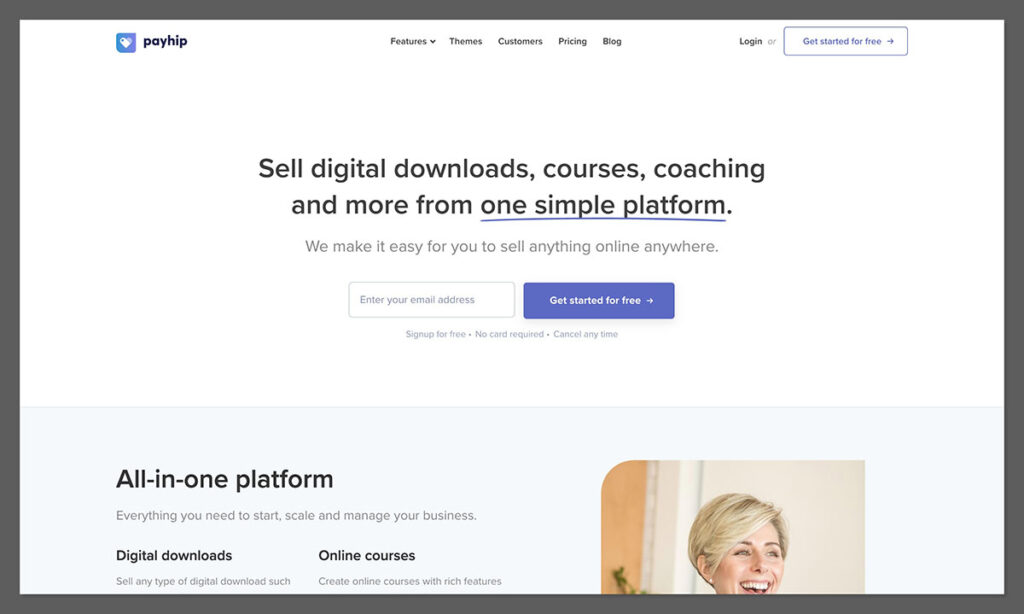
Payhip is a SaaS platform designed to support companies and individuals selling digital products online. Primarily, it’s intended for people who want to sell downloads, online courses, and memberships, but you can sell physical products too.
The solution gives you access to a website builder, with customizable themes, access to a range of payment processing solutions, and a handful of other tools for marketing and finance management.
Unlike Shopify, Payhip has a free plan, which includes all the features of the platform, and places no limits on the number of products you can sell, or your revenue. The only downside is you’ll pay a 5% transaction fee on every sale.
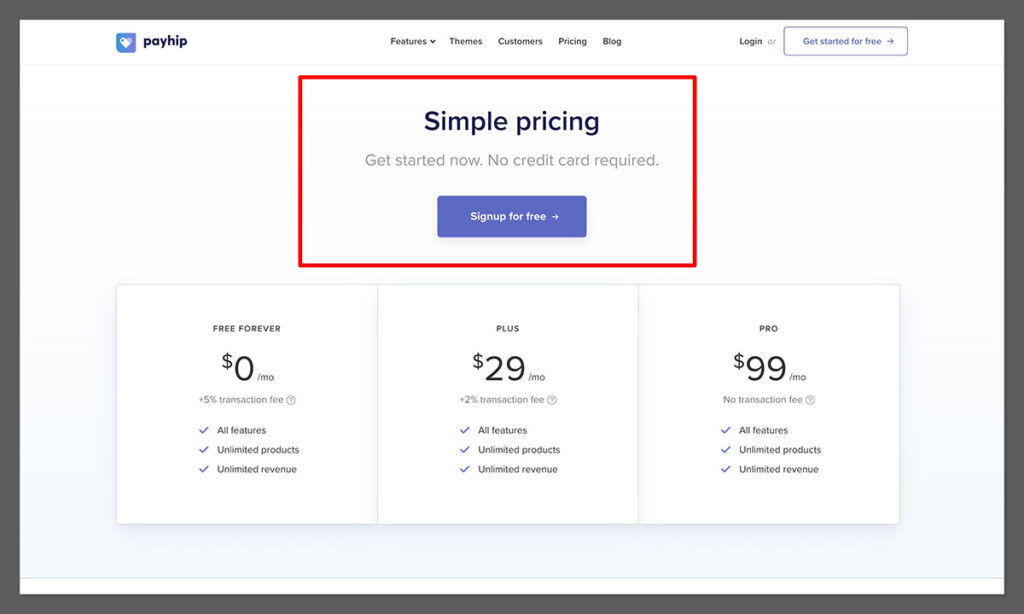
The first Premium plan for $29 per month, reduces the transaction fee to 2%, or if you upgrade to the $99 per month Pro plan, you won’t pay any transaction fees.
MORE: Read our Payhip review.
Shopify vs Payhip: The Core Features
Payhip and Shopify share some similar features, such as an easy-to-use website builder, with integrated search engine optimization elements, payment processing capabilities, and tools for selling a range of products. However, there are some major differences between these options too.
The Main Features of Shopify:
- Comprehensive website builder: Shopify has a much more robust website builder, with a wider range of themes to suit any industry. The solution includes a content management system and blogging options, and allows companies to use their own domain name.
- Sales tools: With Shopify, you get an integrated payment processor (or you can choose to use a third-party option), as well as tools for selling products on various channels, from social media to marketplaces like Amazon. There’s even an integrated POS solution.
- Marketing tools: Shopify has basic tools for email and chat-based marketing already built-in. It also integrates with a range of marketing solutions, connects with Google Analytics and social media channels, and the platform is optimized for search engines.
- Operations management: Shopify gives business leaders all the tools they need to run a successful business. Alongside robust order, product and inventory management tools, you can access staff accounts, create customer profiles, and leveraging shipping rules.
- Reporting and analytics: Although the reporting features available from Shopify vary depending on the plan you choose, most options will allow you to gain insights into popular products, inventory levels, financial health and more.
- Integrations: Shopify has a fantastic app market, where you can access integrations with thousands of popular website design, marketing, customer service, conversion optimization, and order fulfillment apps.
The Core Features of Payhip
- Website builder: Payhip’s website builder comes with access to a handful of themes you can customize to suit your business. You can design as many website pages as you like, add custom domains, with a free SSL certificate, and invest in content marketing with a blog.
- Sales tools: With Payhip, companies can sell digital downloads, courses, coaching experiences, memberships, and physical products with no limitations. The platform integrates with Stripe and PayPal to process payments, and even automates tax and VAT reports.
- Marketing tools: The basic marketing tools on Payhip empower companies to boost sales with coupons, affiliate marketing programs, cross-selling and upselling campaigns, referral programs, and customer reviews.
- Integrations: Payhip doesn’t integrate with as many tools as Shopify, but you can connect the platform to a range of email marketing solutions (like AWeber and ConvertKit). Plus, you can add PayHip to an existing CMS (like WordPress, Squarespace, or Wix).
- Reporting: Payhip’s reporting features are very basic, but you can access simple insights into product sales, create VAT and Tax reports, and monitor inventory levels.
When to Use Shopify and When to Use Payhip
When to Use Shopify
I’d recommend picking Shopify if you need:
- Omnichannel selling options, for social media, marketplaces, and in-store sales.
- Advanced inventory, order, and product management tools, as well as powerful solutions for customer and employee management.
- More flexible website design options, with a wider range of themes suited to any industry.
When to Use Payhip
I’d suggest using Payhip if you want:
- An all-in-one simple solution for selling physical and digital products.
- A straightforward website builder and user-interface designed for beginners with no coding knowledge.
- The option to launch a business and start selling products for free (though the transaction fees are pretty high).
Shopify vs Payhip: Final Thoughts
Ultimately, Shopify is the better ecommerce platform all around. It’s more versatile, scalable, includes more advanced features, and it supports omnichannel selling. It also allows you to sell any kind of product (though you may need to use integrations).
I’d only recommend Payhip if you’re looking for an easy and affordable way to sell digital products, and the occasional physical item (like books or branded merchandise).
